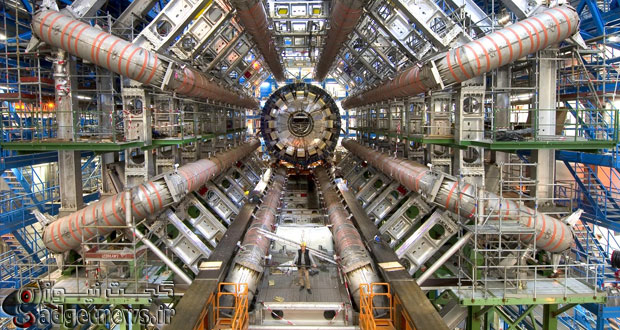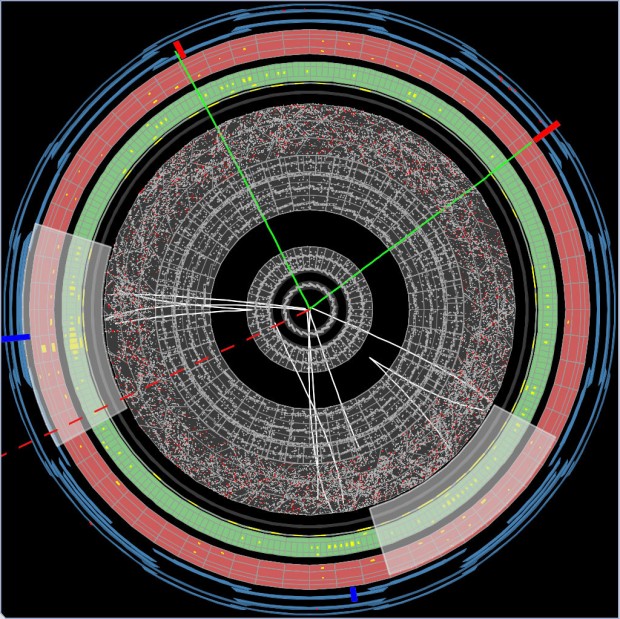پروژهی «شکارچیان هیگز» امروز راهاندازی شد. در این پروژه همه افراد علاقهمند به ۲۵ هزار تصویری که در برخورددهندهی بزرگ هادرونی در سرن (CERN) گرفته شده است، دسترسی دارند. با دنبال کردن رد منبع در تصاویر میتوانید انفجار ذرات زیراتمی را مشخص کنید که هنگام از بین رفتن بوزون هیگز ایجاد میشود.
پروفسور آلن بار (Alan Barr ) از دانشگاه آکسفورد و مدیر پروژهی شکارچیان هیگز، میگوید:
«اگر هرچیزی در زمینه کشف شود که بفهمیم هنگام از بین رفتن بوزون هیگز چه اتفاقی میافتد، نسبت به کشف بوزون هیگز (دو سال پیش) بسیار ارزشمندتر و هیجانانگیزترخواهد بود. ما کسانی را میخواهیم که کمک کنند فراتر برویم، تصاویر را بررسی کنند و به ما بگویند که چه میبینند».
در آزمایشگاه اطلس و برخورددهندهی هادرونی پروتونها با سرعتی نزدیک به یک میلیارد کیلومتر در ساعت با هم برخورد میکنند. در چنین برخوردهایی بوزون هیگز به وجود میآید اما به سرعت به ذرههای دیگر تجزیه میشوند و دانشمندان حدس میزنند که با این واپاشی ذرهی جدیدی به وجود میآید که پیش از این هرگز دیده نشده است. شبیهسازیها نشان میدهند که این ذرات جدید رد بلندی از خود در آزمایشگاه بهجا میگذارند که برنامههای کامپیوتری نمیتوانند این ردها را تشخیص دهند اما چشم انسان توانایی دیدن و جدا کردن این ردها را دارد.
از سوی دیگر نوشتن الگوریتمهای کامپیوتری برای چنین جستوجویی بسیار دشوار است. اما علاقهمندان به این جستوجو میتوانند با دسترسی به اطلاعات آزمایشگاه اطلس دانشمندان را یاری دهند و شاهد تحولی عظیم در فیزیک ذرات باشند.
این پروژه با همکاری دانشمندان دانشگاه آکسفورد، نیویورک، بریمینگام، پروژهی زویونیورز، آزمایشگاه اطلس و سرن راهاندازی شده است. اگر علاقهمند به شرکت در این طرح هستید به وبسایت این پروژه سری بزنید.
منبع : wired
You Can Help Physicists Make the Next Higgs Boson Discovery
You Can Help Physicists Make the Next Higgs Boson Discovery
More than two years after physicists discovered the Higgs boson, there’s still a lot they don’t know about the elusive particle. Now, they want your help to make the next discovery about this particle with a new citizen-science project called Higgs Hunters. That’s right, some of the brainiest physicists in the world would like you to pitch in.
The Higgs boson was discovered at the Large Hadron Collider in Switzerland, the most powerful particle accelerator in the world. It may sound strange that even with this enormous, $5-billion machine, and all the scientific power applied to the data it collects, scientists still need people like you to help. But the human mind is still better than the most sophisticated algorithm at some tasks, and scouring the LHC data for more evidence of the Higgs is one of those.
The data is created when the LHC slams together beams of protons careening at near-light-speed. When the particles collide, they produce a flurry of new particles—including, sometimes, a Higgs boson. But the Higgs can only exist for 10-22 seconds before splintering off into more particles, making it really tough to detect. Theorists predicted what some of those particles would be and how they would create a telltale trail of evidence that the LHC’s detectors could then measure. It was by identifying these signatures that physicists concluded that indeed, they had created some Higgs bosons. But there is still much to learn about this particle.
The theory that describes the fundamental particles and how they interact with one another is called the Standard Model. Although it’s been extremely successful at predicting all kinds of particle interactions, physicists know that it’s incomplete. For example, the theory doesn’t include gravity nor does it explain dark matter, the mysterious stuff that makes up almost a quarter of the universe. So physicists have tried to come up with better, more complete theories.
According to some of these new ideas, the Higgs may decay into some other, unknown, exotic particles that don’t carry an electric charge. The problem is that the detectors at the LHC aren’t able to see particles with no charge. However, these theoretical exotic particles may break down into yet more particles that are electrically charged, and can be detected.
Particles that can be detected leave behind tracks that are measured by the detector, and this data can be translated into pictures like the one on the left. The tracks appear as lines emanating from the center of the picture, the site of the collision.
The theoretical particles with no electric charge don’t leave a track. Instead, they move invisibly away from the center of the collision before they break up into particles that can be detected. Consequently, the tracks left by those particles sprout from an off-center point in the picture. This pattern turns out to be difficult for computers to identify.
That’s where you come in.
People who become Higgs Hunters will look at images and identify and count tracks that emanate from an off-center point. The data will be a mix of real data from the LHC and those produced by computer simulations. By classifying the data by eye, the Hunters will also help the physicists’ computers improve their own algorithms for identifying off-center tracks.
With your help, physicists hope to make some more exciting discoveries. So get hunting.
 گجت نیوز آخرین اخبار تکنولوژی، علم و خودرو
گجت نیوز آخرین اخبار تکنولوژی، علم و خودرو 








